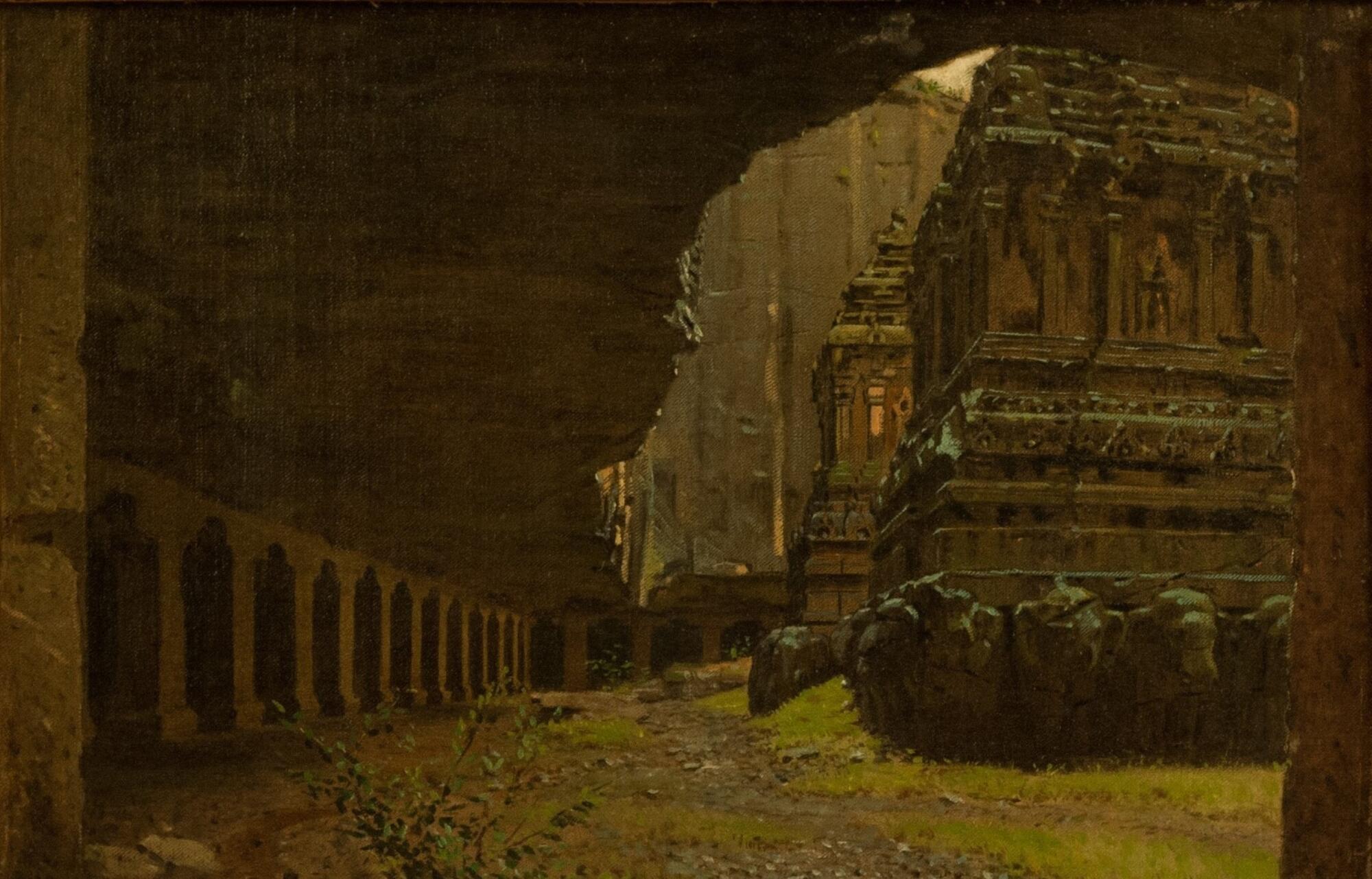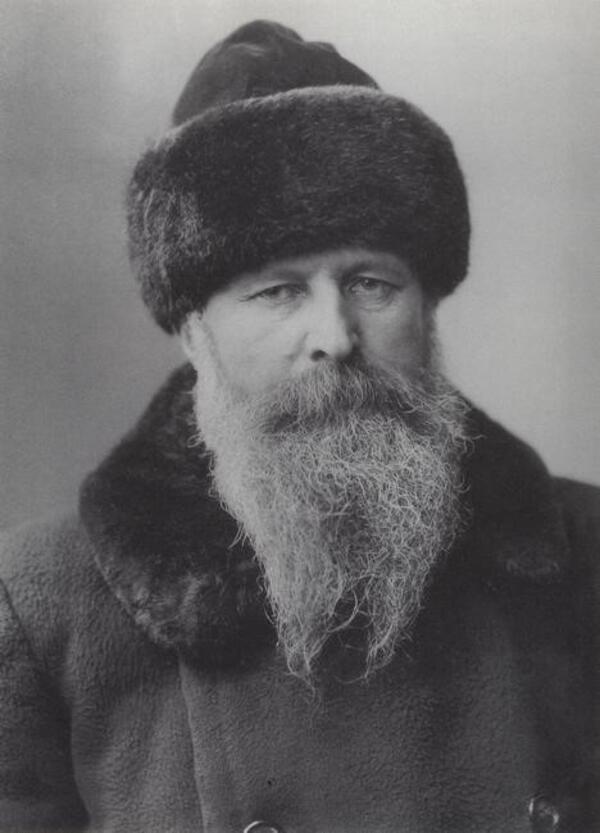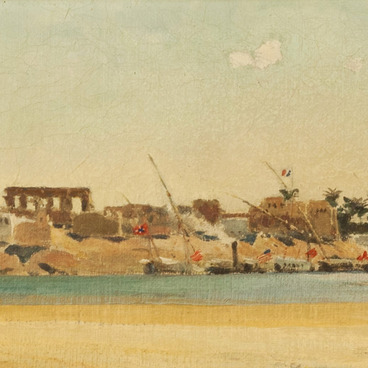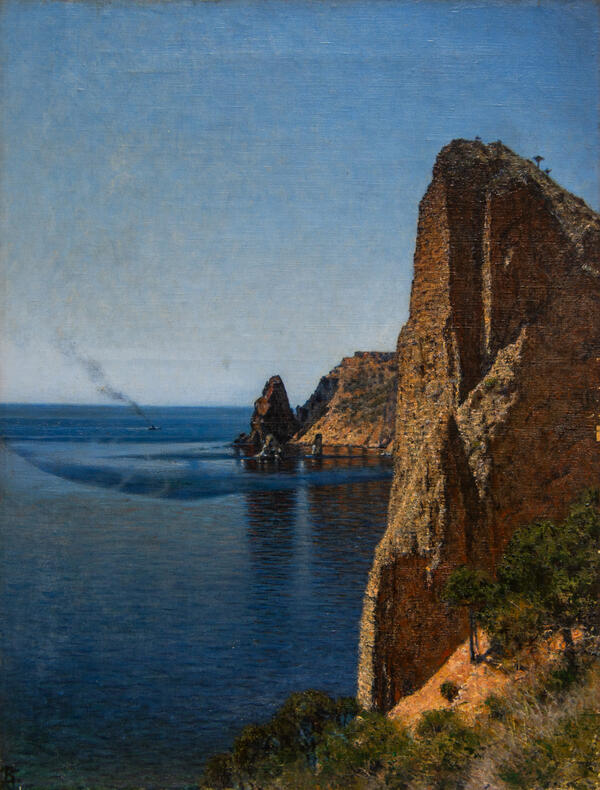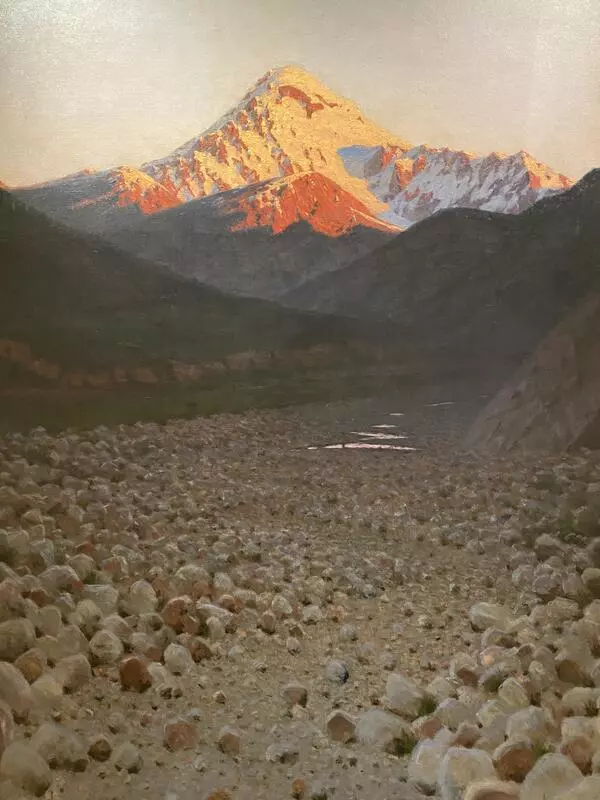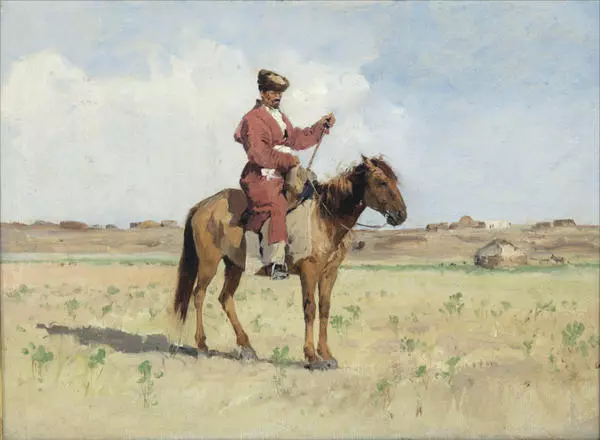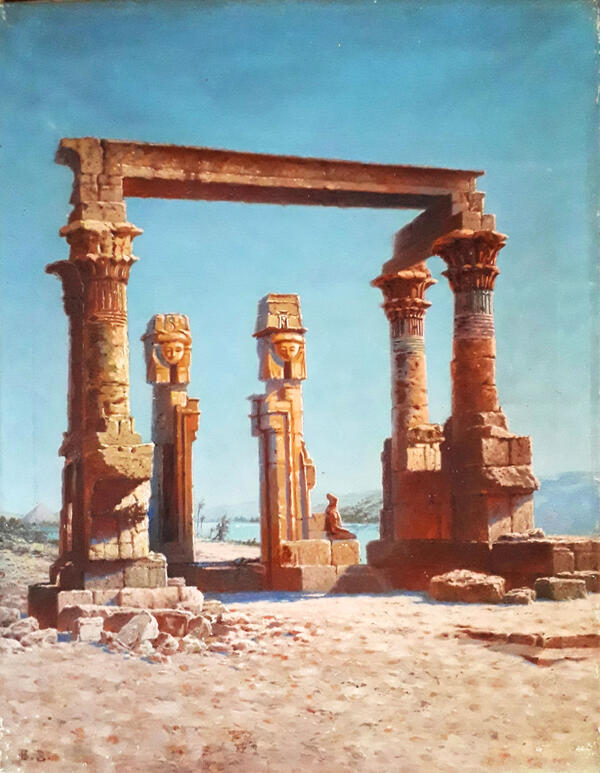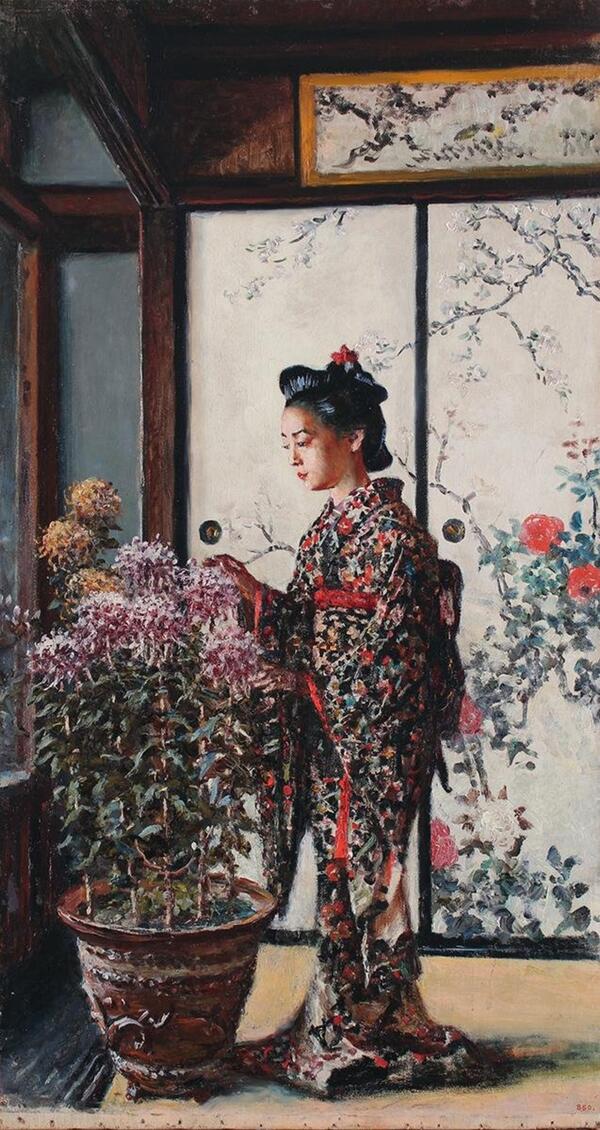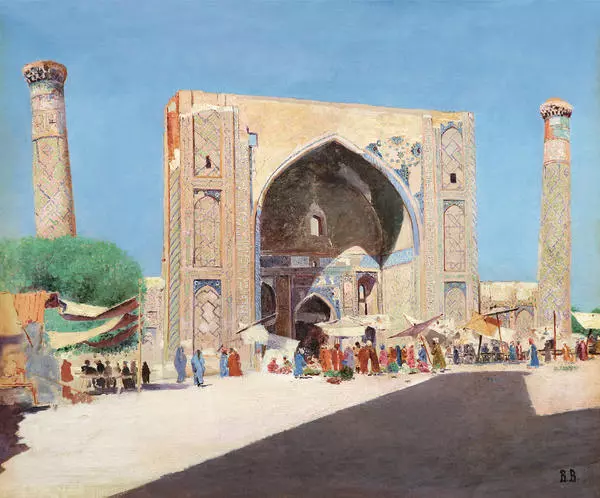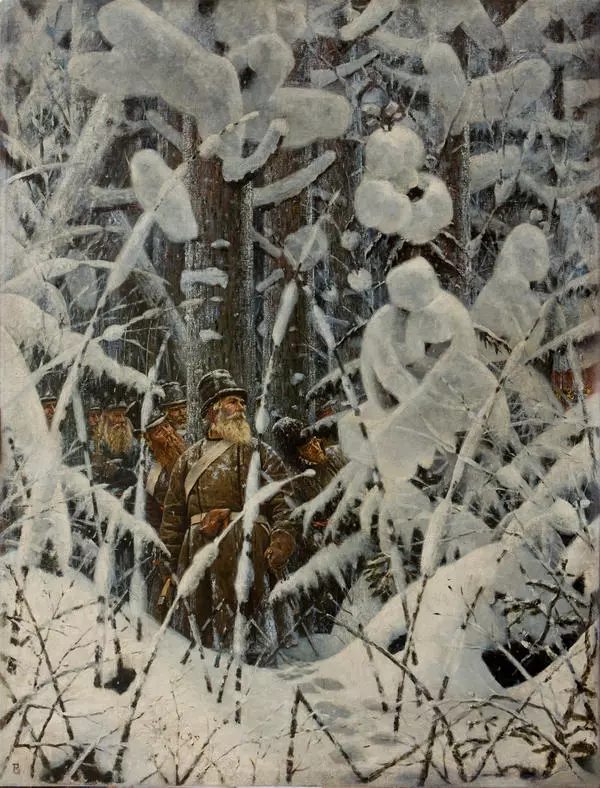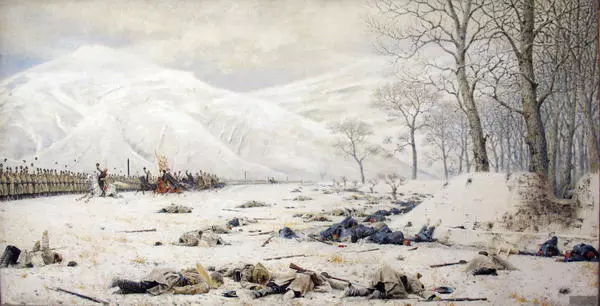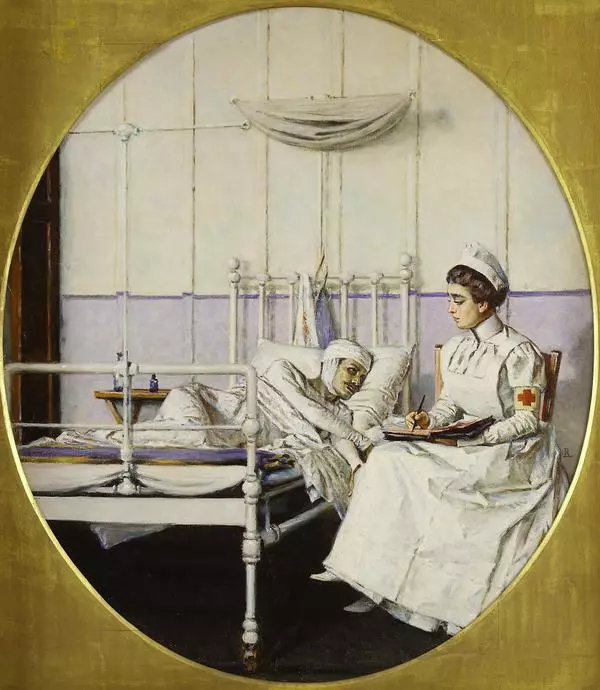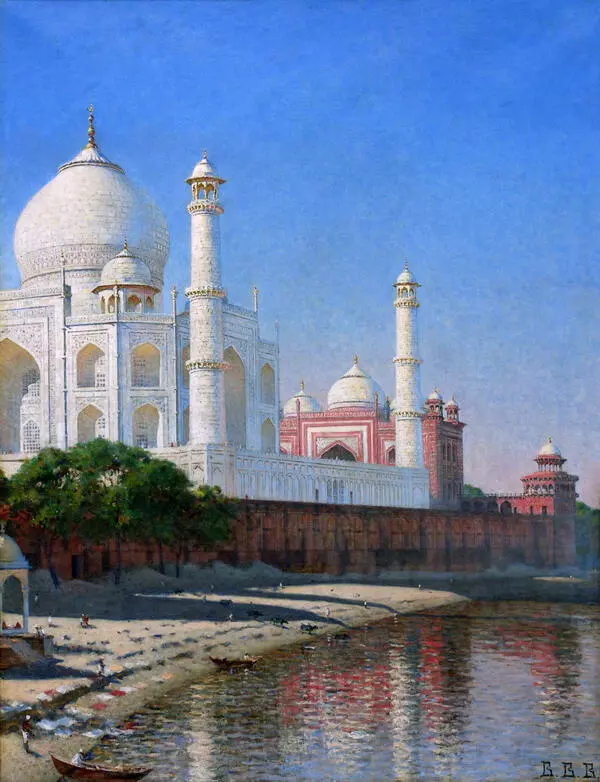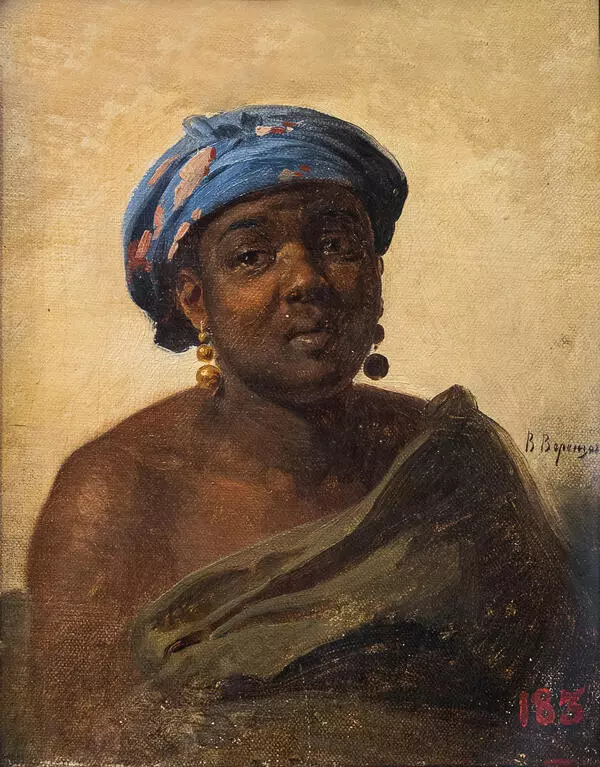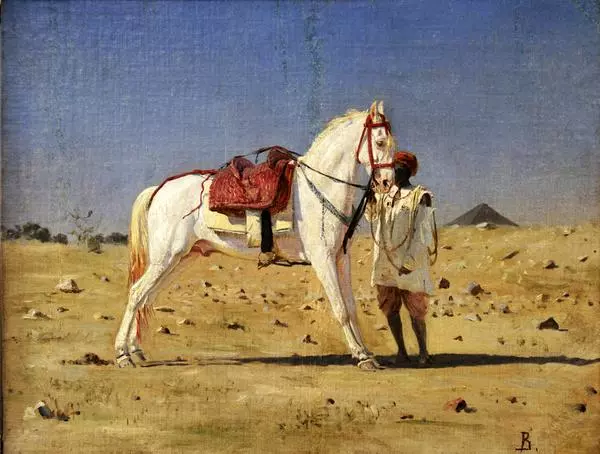The study ‘Underground Gallery in the Ellora caves’ by Vasily Vereshchagin shows a Hinduist rock-cut monastery-temple in Ellora, which is a hallmark of India. On the whole, there are around 1200 cave temples in India, all cut in hard rock. One of the most remarkable cave temples of India is Kailashanatha, or Kailasa, the centerpiece of the Ellora caves temple complex.
Vereshchagin was captivated by the craftsmanship of the ancient architects of Ellora. The left side of the picture shows a rock-cut gallery separated from the outside by an arcade of quadrilateral pillars. Placed in the foreground is an open court overgrown with bright green grass and shrubs. To the right, through the gateway, are two temples supported by massive elephant statues made of stone. Further away is the rock wall and a tiny stretch of the sky further above.
The Kailasa temple is the largest in India and is notable for its unique construction method. It was not exactly cut in the face of a cliff but rather excavated vertically — carvers started at the top of the original rock and excavated downward. The temple is fully covered with sculptures of gods and mythological creatures, and its base is encircled with a frieze of life-size elephants carved from stone.
The walls of the Kailasa temple are covered with relief friezes depicting Ravana shaking the Kailasa mountain, Shiva the Vanquisher of the Three Cities, the abduction of Sita, etc. The temple was originally completely covered with plaster, which visually detached it from the surrounding rocks.
The Kailasa temple was built in the early feudal period, during the times of transition from the slave-owning Gupta Empire to the Middle Ages. The new art perfectly reflected the new paradigm of the Indian culture of that period. The temple is quite massive and imposing, carved out from a single rock, yet its lines are flowing, a testament to the great craftsmanship of its builders who excavated it from top to bottom without any scaffolding. The temple stands in the middle of a great cut-out court, it is 55 m long, 36 m wide, and it covers 1980 sq.m. of surface.
Vasily Vereshchagin (1842–1904) was a famous Russian war painter. The bulk of his works, including ‘The Apotheosis of War’, ‘At the Doors of a Mosque’, ‘They Are Triumphant’, ‘Surprise Attack’, etc., can be seen in the Tretyakov Art Gallery in Moscow.
Vereshchagin was captivated by the craftsmanship of the ancient architects of Ellora. The left side of the picture shows a rock-cut gallery separated from the outside by an arcade of quadrilateral pillars. Placed in the foreground is an open court overgrown with bright green grass and shrubs. To the right, through the gateway, are two temples supported by massive elephant statues made of stone. Further away is the rock wall and a tiny stretch of the sky further above.
The Kailasa temple is the largest in India and is notable for its unique construction method. It was not exactly cut in the face of a cliff but rather excavated vertically — carvers started at the top of the original rock and excavated downward. The temple is fully covered with sculptures of gods and mythological creatures, and its base is encircled with a frieze of life-size elephants carved from stone.
The walls of the Kailasa temple are covered with relief friezes depicting Ravana shaking the Kailasa mountain, Shiva the Vanquisher of the Three Cities, the abduction of Sita, etc. The temple was originally completely covered with plaster, which visually detached it from the surrounding rocks.
The Kailasa temple was built in the early feudal period, during the times of transition from the slave-owning Gupta Empire to the Middle Ages. The new art perfectly reflected the new paradigm of the Indian culture of that period. The temple is quite massive and imposing, carved out from a single rock, yet its lines are flowing, a testament to the great craftsmanship of its builders who excavated it from top to bottom without any scaffolding. The temple stands in the middle of a great cut-out court, it is 55 m long, 36 m wide, and it covers 1980 sq.m. of surface.
Vasily Vereshchagin (1842–1904) was a famous Russian war painter. The bulk of his works, including ‘The Apotheosis of War’, ‘At the Doors of a Mosque’, ‘They Are Triumphant’, ‘Surprise Attack’, etc., can be seen in the Tretyakov Art Gallery in Moscow.
